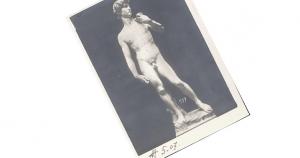 As a boy the Dallas Cowboys were led by the very admirable coach Tom Landry. He seemed just so to me especially when the great Roger Staubach was his quarterback. However, I loved the Green Bay Packers, thank the gentlemanly Bart Starr, and eventually the two loves clashed. The Packers were, in my childhood days, becoming very bad and the Cowboys good. As the Packers struggled to get better, the Cowboys often closed the door. The tension became too great, one love had to go and I chose the Packers, because of course I did. I admired the Cowboys, I loved Green Bay. This came at a cost as a cousin-like-a-brother remained true to the silver and blue even with Jimmy Johnson. The cost was, barely, worth it as it came with the ability to chaff him when Favre came and the football tide turned.
As a boy the Dallas Cowboys were led by the very admirable coach Tom Landry. He seemed just so to me especially when the great Roger Staubach was his quarterback. However, I loved the Green Bay Packers, thank the gentlemanly Bart Starr, and eventually the two loves clashed. The Packers were, in my childhood days, becoming very bad and the Cowboys good. As the Packers struggled to get better, the Cowboys often closed the door. The tension became too great, one love had to go and I chose the Packers, because of course I did. I admired the Cowboys, I loved Green Bay. This came at a cost as a cousin-like-a-brother remained true to the silver and blue even with Jimmy Johnson. The cost was, barely, worth it as it came with the ability to chaff him when Favre came and the football tide turned.
Still, some costs, some choices, are too high to pay!
I was reminded of this fact in a discussion where one idea had caused a very educated man to give up on many other ideas. The cost is not very great when a boy chooses one football team over another, but preserving a metaphysic at the cost of human consciousness and experience is a deal breaker. Given enough effort, and a willingness to pay the price, almost any big view of reality can be saved. The cost, like a KJV only Baptist giving up on manuscript evidence, may just be too high.
Crude materialism is the KJV-onlyism of online atheism: a win that costs too much.
Materialism (at least in a common online form) is the idea that everything amounts to matter and energy in mindless motion:
 All that exists is material. Thoughts do not exist. Numbers do not exist. Minds do not exist. Consciousness does not exist. Our experiences of a rose or Michelangelo’s David, the qualia do not exist.*
All that exists is material. Thoughts do not exist. Numbers do not exist. Minds do not exist. Consciousness does not exist. Our experiences of a rose or Michelangelo’s David, the qualia do not exist.*
What about creation of art? The David did not exist materially before sculpted by Michelangelo. The response, if this crude materialism is to be saved, is that this work of art came about through neurons firing and muscles contracting. That’s it.
Certainly neurons fired and muscles contracted, but what of the plans? For a sculpture like the David, there might be a commission from one person (C), a paper plan (P1) drawn by C and a description of the project in words. The artist (M) looks at P1 and may make many papers plans (P2 at least!) and models of the sculpture (M). M will describe his work to his helpers (H) and they will join him in seeing the paper plans, the models, and then produce the David.
There is certainly motion here and actions by bodies and brains, but isn’t there also information? Where is it? Why do the neurons of C, M, and H all produce similar products on paper that then are translated in three dimensions in stone? When we say: “M’s neurons fired, muscles contracted, so the David” we have given up very powerful intuitions, so powerful they frame all human languages. We think the plans guided something (mind?), the verbal instructions between C, M, and H guided something. Where is the idea in the (reductive) materialist account? In fact, where is the David?
For, of course, the David is, I recollect it, and we go to the David, the most beautiful artifact I have seen, and we carry something home. Certainly at the time my neurons fired, but then later, at home, more firing neurons (though not the same ones by that time!) allowed me to picture David, look it up online, and recognize the masterpiece when I saw it in pixels on a tablet. What do all these things have in common: the paper plan, the verbal descriptions, the clay, the marble, the pixels, even the plastic that some tourists brought home in the shape of David?
What allows for the translation of neural firing to different media and then allows for accurate new neural firings? The phenomenon lacks adequate causes.
Could this crude materialism be true? Maybe, but only at the cost of making fictions out of our deepest experiences. Our very consciousness is a neural firing, but evidently a different one at every moment for our lifetimes. Neurons fire, that is what I am.
Maybe. Or maybe neurons fire and are part of what I am.
Surely our evidence that materialism is true is not so strong. After all, nothing in science would change if idealism were true. Suppose that everything is an idea, a program, in the Mind of God. We would still do science, matter and energy could still be studied, but now we could also allow for the existence of information, plans, and human consciousness.
We would have it all. I am not an idealist, most days, and materialists make sophisticated and interesting efforts to move from crude reductive materialism. At the very least, perhaps matter in certain configurations gives rise to “more.”
Maybe.
Many atheists allow for the existence of numbers and ideas.
Yet this much is certain, some Internet atheists, evidently from fear of religion and a lack of awareness that before science there was philosophy. Science is compatible with materialism, idealism, or dualism. Only philosophy (and perhaps theology!) can help us choose between these basic choices, because none of the three would change how we do science. Each comes with a price, but this price is often ignored by the crude materialist.
He will go on using purposeful words, talk about qualia, live a life as if consciousness were real. He will affirm reductive materialism and then go out and live as if it was false. Surely we can do better? This is not one football team or the other, but about whether anyone is playing a game or whether somehow twenty-two players, coaches, teammates, fans, folks watching on screens, are somehow having matching neural firings.
A person chooses and if he wishes to save one thing, he might be able to do so, but what does it profit a man to gain a material cosmos and lose his consciousnesses?
————————————-
*I am describing a form of materialism one often meets on social media not more serious forms defended by philosophers.












